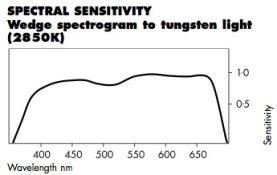Larry Bullis
Subscriber
My wife uses a Lubitel tlr which we bought because it was very inexpensive. She wanted to use a zone plate, so when the camera arrived, I took it into the shop, smashed out the lens, and installed the zone plate - most people wouldn't want to do that with a Rolleiflex. Since she is limited to the equivalent of f/64, we looked for a very fast film and found the perfect one: Ilford's delta 3200. We can process it to get a very wonderful grain pattern; sharp grains that produce images that look sort of like mezzotint. I know that some APUG members have seen these; if you haven't, and are interested, some of them are at http://www.pbase.com/janealynn.
There is just one problem. She can't see the numbers through the red window that the Lubitel, being a very basic camera, uses to indicate the position of the frame. The numbers are printed in a faint gray on the white paper background. The problem is getting worse, because as we age, our eyes aren't getting any better. I just searched APUG, and I found several mentions of this problem, but nobody, to my knowledge, has complained. So I'll be the first.
This seems to me to be a problem of poor design, which doesn't seem like Ilford, somehow. Here's my reasoning:
Most "real" cameras have automatic advance from one frame to the next. Only those who use simple, old, or cheap cameras use the numbers on the film backing at all. Everyone who does use them looks at them through a red window. The numbers are there only for the purpose of helping us know where we are on the film. If we can't see them, why have numbers at all?
In order for them to be most useful, they need to have sufficient contrast. So why not give them the highest possible contrast? The white backing is fine, but the numbers ought either to be very dark black, or fully saturated cyan, if we are at all concerned about visibility. What other concern might there be? Since cyan would require an expensive additional press run, black would be the most cost effective solution. Since the Ilford identification is printed in deep black, it wouldn't take anything to print the numbers that way too. Making the numbers visible would be a great help for everyone who has to look through a red window.
Unfortunately, we can't count turns of the knob because the diameter of the spool changes with each advance, so the spaces between frames increase incrementally; the last frame is either incomplete, or simply not there. The numbers are important.
The light gray on the white looks very nice. Doubtless that must have been the reason for it. But who looks at the paper backing? Designers, all too often, neglect function in favor of appearance. Not helpful.
Or is it just to save on the cost of the ink?
There is just one problem. She can't see the numbers through the red window that the Lubitel, being a very basic camera, uses to indicate the position of the frame. The numbers are printed in a faint gray on the white paper background. The problem is getting worse, because as we age, our eyes aren't getting any better. I just searched APUG, and I found several mentions of this problem, but nobody, to my knowledge, has complained. So I'll be the first.
This seems to me to be a problem of poor design, which doesn't seem like Ilford, somehow. Here's my reasoning:
Most "real" cameras have automatic advance from one frame to the next. Only those who use simple, old, or cheap cameras use the numbers on the film backing at all. Everyone who does use them looks at them through a red window. The numbers are there only for the purpose of helping us know where we are on the film. If we can't see them, why have numbers at all?
In order for them to be most useful, they need to have sufficient contrast. So why not give them the highest possible contrast? The white backing is fine, but the numbers ought either to be very dark black, or fully saturated cyan, if we are at all concerned about visibility. What other concern might there be? Since cyan would require an expensive additional press run, black would be the most cost effective solution. Since the Ilford identification is printed in deep black, it wouldn't take anything to print the numbers that way too. Making the numbers visible would be a great help for everyone who has to look through a red window.
Unfortunately, we can't count turns of the knob because the diameter of the spool changes with each advance, so the spaces between frames increase incrementally; the last frame is either incomplete, or simply not there. The numbers are important.
The light gray on the white looks very nice. Doubtless that must have been the reason for it. But who looks at the paper backing? Designers, all too often, neglect function in favor of appearance. Not helpful.
Or is it just to save on the cost of the ink?











